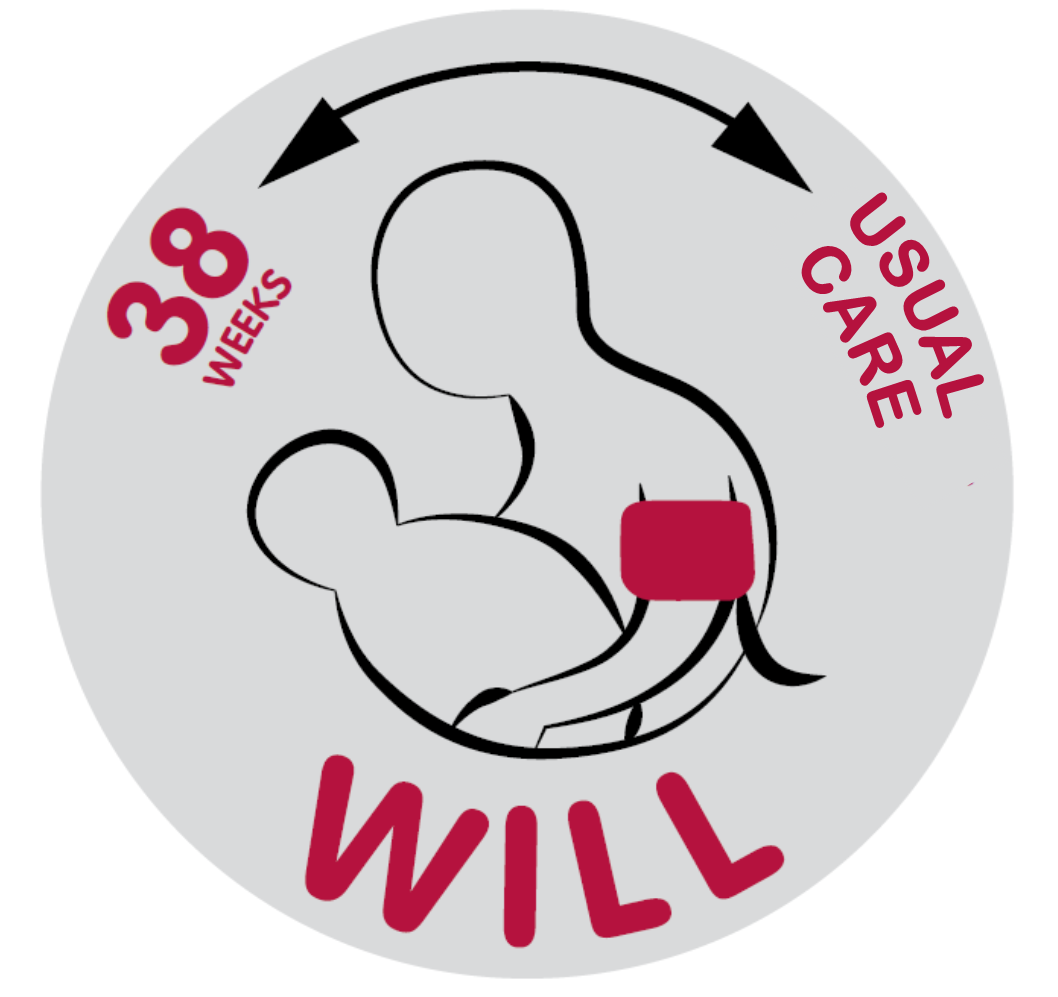About WILL
WILL is a pragmatic, parallel-group, open-label, multicentre, randomised controlled trial with an internal pilot.

Aim
To investigate the clinical effectiveness and cost-consequences of planned early term delivery at 38+0 to 38+3 weeks’ gestation, compared with usual care at term, in pregnant women with chronic or gestational hypertension that develops by 37+6 weeks’ gestation.
Total number participants
The trial will recruit 1,080 pregnant women with chronic or gestational hypertension, from NHS consultant-led maternity units in the UK.
Outcome Measures
Primary outcomes:
MOTHER: Composite of poor maternal outcome until primary hospital discharge home or 28 daysafter delivery (whichever is earlier), defined as:
• Severe hypertension (i.e., systolic BP (sBP) ≥160 or diastolic BP ≥110mmHg); or
• Maternal death; or
• Maternal morbidity defined as any of the following: GCS<13; stroke; TIA; eclampsia; blindness;
uncontrolled hypertension; inotropic support; pulmonary oedema; respiratory failure; SpO2 <90%;
myocardial ischaemia or infarction; hepatic dysfunction, hepatic haematoma or rupture; acute
kidney injury or dialysis; platelet count <50x109/L; transfusion; or placental abruption. These were
adapted from a Delphi consensus in hypertensive pregnancy(10;11).
BABY: Neonatal care unit admission for ≥ 4 hours, until primary hospital discharge home or 28 days
after delivery (whichever is earlier).
Secondary outcomes:
Maternal• Caesarean delivery
• Instrumental vaginal delivery or Caesarean delivery (vs. spontaneous vaginal delivery)
• Infection of the Caesarean wound, episiotomy, or vaginal tear, as applicable
• Individual components of poor maternal outcome up to discharge or 28 days postpartum
(whichever is earlier)
• ‘Poor maternal outcome’ assessed at six weeks postpartum
• Elevated liver enzymes
• Platelet count <100x109/L
• Pre-eclampsia
• Postpartum haemorrhage (PPH)
• Intensive care unit (ITU) admission
• Potential co-interventions, including antihypertensive therapy taken, aspirin, magnesium
sulphate, bedrest at home, use of home BP monitoring, maternal blood or urine testing at the
laboratory prior to delivery admission, office/clinic visits, obstetrical day unit visits, acute care
visits, antenatal admissions, fetal cardiotocography, and fetal ultrasound
• Clinical indications for delivery in the expectant care arm
• Maternal satisfaction assessed at hospital discharge or 28 days after delivery (whichever is
earlier), as measured by the Childbirth Experience Questionnaire 2.0
Neonatal
• Neonatal care unit assessed at 28 days after birth
• Indication for neonatal care unit admission until primary hospital discharge ≥ 4 hours
• Stillbirth
• Neonatal death
• Breastfeeding established, assessed at hospital discharge or 28 days after delivery (whichever is
earlier)
• Exclusive breastfeeding assessed at hospital discharge or 28 days after delivery (whichever is
earlier)
Health Economics
• Cost-consequence analysis from NHS perspective (enrolment to hospital discharge)